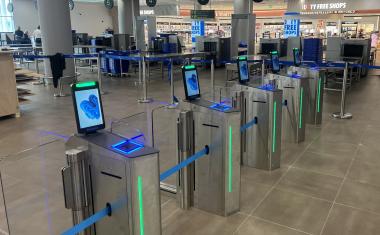Market Study: Electronic locks dominate the access control industry
Electronic locks have evolved significantly since the 1970s when they were used mostly in hospitality and relied upon holes that were drilled into the cards themselves. Three decad...
Electronic locks have evolved significantly since the 1970s when they were used mostly in hospitality and relied upon holes that were drilled into the cards themselves. Three decades later, electronic locks are now one of the fastest growing segments of the access control industry and have unmatched versatility. These lock types can be constant online wireless, semi-online wireless, data on card, Wi-Fi or be ZigBee, Z-Wave or Bluetooth or NFC compatible.
In 2015, IHS forecasts the global market for electronic locks will exceed $1 billion. IHS segments electronic locks into three categories: mechatronic, electromechanical and digital cylinder.
Of the three product categories, IHS expects that electromechanical locks will see the most uptake over the next 5-8 years, representing nearly 77% of the total electronic lock market globally in 2015. For electromechanical locks, IHS expects that the residential market in North America will be a driving factor over the next 3-5 years – as more multi-system operators (MSOs) and traditional monitoring providers look to offer electronic locks not only as an ad hoc option but as part of its existing packages.
Although electromechanical locks are by far the largest, the most growth will be associated with mechatronic over the next five years. Mechatronic locks are often used in remote and harsh locations where battery life can be threatened, so the battery is in the key and in some cases, these devices require no battery at all – only a special key to initiate an authorization. Global unit shipments are expected to triple for mechatronic locks from 2014 through 2019. One reason for this forecast is the rate at which IHS expects utilities and telecommunications to adopt electronic security. Enhanced security, audit trails, compliance and efficiency are just a few of the reasons why these end-user industries are looking to electronic security. In remote environments, electronic locks can also be used to protect contractors and workers. If a door is propped open or a request to exit read does not occur after a predetermined amount of time, an alert can be generated.
Overall, IHS expects that electronic locks will continue to play an important role in all access control solutions moving forward. By 2019, IHS forecasts that electronic locks will exceed the revenue of both the readers and panels market, making it the largest segment for electronic door access control. Similar to other trends occurring in the access control industry such as TCP/IP (IT integration), logical access control and open standards, suppliers and channel partners that embrace wireless lock integration with traditional wall readers will gain the most over the next 5 years.













